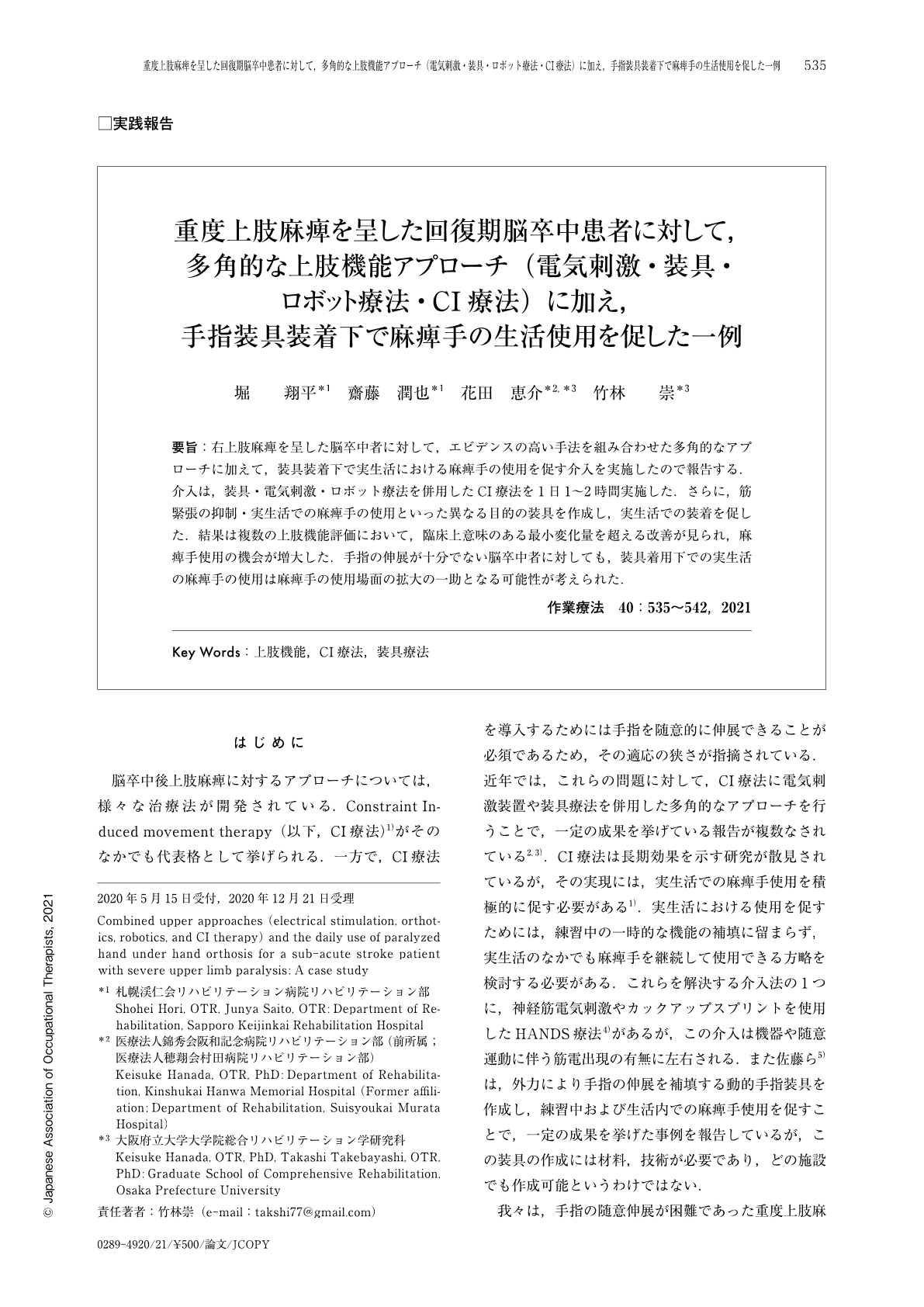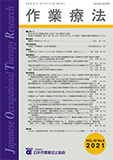Japanese
English
- 販売していません
- Abstract 文献概要
- 1ページ目 Look Inside
- 参考文献 Reference
- サイト内被引用 Cited by
要旨:右上肢麻痺を呈した脳卒中者に対して,エビデンスの高い手法を組み合わせた多角的なアプローチに加えて,装具装着下で実生活における麻痺手の使用を促す介入を実施したので報告する.介入は,装具・電気刺激・ロボット療法を併用したCI療法を1日1〜2時間実施した.さらに,筋緊張の抑制・実生活での麻痺手の使用といった異なる目的の装具を作成し,実生活での装着を促した.結果は複数の上肢機能評価において,臨床上意味のある最小変化量を超える改善が見られ,麻痺手使用の機会が増大した.手指の伸展が十分でない脳卒中者に対しても,装具着用下での実生活の麻痺手の使用は麻痺手の使用場面の拡大の一助となる可能性が考えられた.
Purpose: In addition to a multifaceted approach combined with a highly evidence-based approach, we encouraged the use of the paralyzed hand in real life under orthotic conditions in patients with sub-acute stroke who presented with severe upper limb paralysis. Methods: CI therapy combined with the orthosis, electrical stimulation, and robotics therapy for one to two hours per day. In addition, two types of orthoses were made for different purposes, such as suppressing muscle tone and using a paralyzed hand in real life, to encourage the use of the orthosis in real life. Results: Upper extremity limb outcomes improved beyond the minimum clinically meaningful change (MCID), and there were increased opportunities for paralytic hand use under orthotics. Conclusion: The use of a paralyzed hand with an orthosis in real life may improve function and expand the use of the paralyzed hand for sub-acute stroke patients with severe upper limb paralysis and inadequate finger extension.

Copyright © 2021, Japanese Association of Occupational Therapists. All rights reserved.


